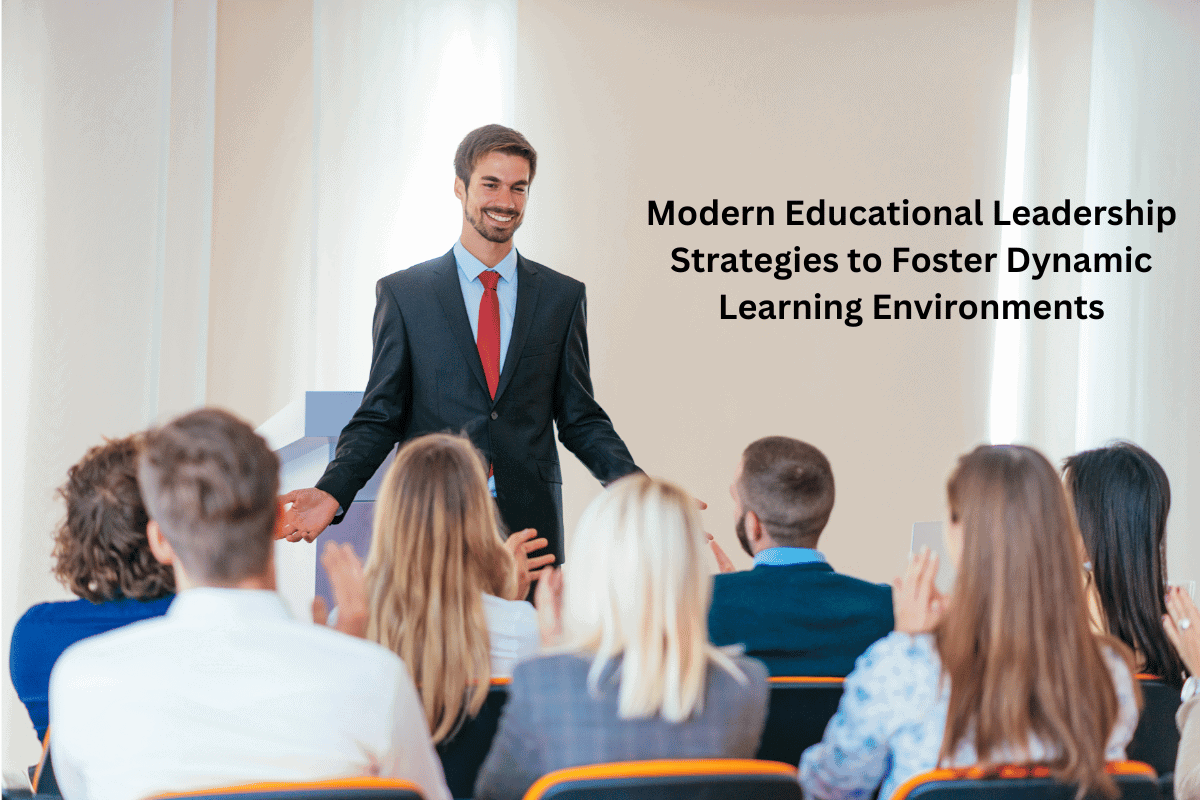Modern Educational Leadership Strategies to Foster Dynamic Learning Environments
Key Takeaways
- Education requires innovative leadership to adapt to changing learning needs.
- Effective educational leadership strategies can enhance both teacher performance and student outcomes.
- Continuous professional development and adaptive learning environments are essential for success.
Introduction: The Role of Leadership in Education
Leadership in education is more than just overseeing operations; it’s about envisioning the future and inspiring students and educators to strive toward their full potential. Leaders pave the way for educational innovation, ensuring that both teaching methodologies and learning environments remain effective and engaging. A significant aspect is how leaders influence teacher performances and student outcomes by establishing and nurturing a culture of excellence and inclusivity. In this regard, many educators are turning to advanced qualifications, such as online doctorate of education programs at Arkansas State University, to hone their skills in fortifying educational institutions with modern, dynamic leadership.
In an age characterized by rapid technological advancements and changing demographics, it’s imperative that educational leaders not only adapt but anticipate the needs of their institutions. They drive the institution’s mission, set strategic direction, and inspire all to partake in a shared vision of success. This necessitates a nuanced understanding of the field, making continuous personal and professional development a pivotal aspect of leadership.
Adaptive Learning Environments
Educational leaders must foster adaptive learning environments to meet the diverse needs of today’s learners. Such environments aren’t static; they evolve, taking cues from global trends and local demands. Leaders can efficiently address distinct learning styles by customizing classroom setups, applying differentiated learning techniques, and adopting flexible scheduling. The trend toward flexible and personalized learning is gaining popularity, and leaders must be proactive in adopting these emerging trends to ensure their institutions are both innovative and adaptable.
Adaptive learning environments embrace change and welcome innovation. They are designed to support students’ varying paces and preferences in learning. The effective deployment of these strategies requires supportive infrastructure and a culture of experimentation, where teachers are encouraged to try new methods, and students are empowered within their learning journeys.
Strategies for Effective Communication
Effective communication is the backbone of any successful educational institution. It’s essential for leaders to cultivate robust lines of communication wherein information flows seamlessly among all members of the school community, including teachers, students, parents, and administrative staff. This necessitates building structures that facilitate regular and meaningful interactions. Techniques such as open-door policies, regular town hall meetings, and feedback loops keep dialogue open and constructive. Such strategies ensure transparency, foster trust, and build a sense of camaraderie among stakeholders, ultimately boosting morale and productivity.
By integrating diverse communication platforms and strategies tailored to various age groups and cultural backgrounds, leaders can effectively bridge gaps and establish a more cohesive educational climate. A robust communication framework can significantly contribute to smoother operations, more engaged learning environments, and the fortification of a positive institutional reputation.
Encouraging Professional Development
For educational leaders, promoting the professional growth of their teaching staff remains a cornerstone of achieving overall institutional success. Encouraging teachers to participate in continuous professional development enhances their competencies and teaching methodologies and ignites their passion for education. Leaders can capitalize on resources such as workshops, seminars, peer learning groups, and online courses to facilitate teacher development. Research on teacher development suggests that when educators actively engage in learning new skills and refining their techniques, both teaching quality and student performance improve dramatically.
A supportive leadership plan takes into account the evolving landscape of education, where new technologies, pedagogies, and student needs constantly shift. By nurturing a culture of lifelong learning, educational leaders can ensure their institutions remain resilient and proactive in the face of new challenges, ultimately enriching the educational journey for all students.
Technology Integration in Education
In today’s digital-dominated era, the integration of technology into the educational sphere is indispensable. It empowers educators and students alike, providing tools that enhance learning experiences and create highly interactive classrooms. By embracing technology, educational institutions can offer diverse and accessible learning solutions that transcend traditional boundaries. Leaders are charged with the task of facilitating this technological adoption, ensuring that such tools are not only cutting-edge but also effective in amplifying educational outcomes.
Creating an ecosystem where technology complements curricular goals involves strategic planning and adequate professional development for educators. Technology, when correctly integrated, aids in the personalization of educational experiences, allows for greater flexibility in teaching and learning and sparks interest in emerging fields of knowledge.
Case Studies: Successful Leadership Models
There are numerous educational institutions where visionary leadership has brought about transformative changes. Examining these cases reveals common strategies such as fostering a strong vision, encouraging collaborative cultures, and implementing evidence-based approaches. For instance, schools that have embraced technological advancements and adaptive learning environments have reported significant improvements in student engagement and achievement levels.
These success stories underscore the importance of a flexible leadership approach that values diverse perspectives and places a premium on inclusive practices. By continuously learning from and adapting these successful models, educational leaders can cultivate environments where teachers thrive, students excel, and overall academic excellence is achievable.
Conclusion: Cultivating Future-Ready Schools
The role of educational leadership is undeniably dynamic, requiring a commitment to continual growth, the embrace of innovative strategies, and an unwavering focus on student success. By emphasizing adaptive learning environments, facilitating robust communication frameworks, endorsing professional development, and strategically integrating technology, educational leaders lay the groundwork for future-ready institutions.
Thus, in preparing students for an increasingly unpredictable world, leaders must remain proactive, imaginative, and inclusive in their approaches. It is through this dynamic leadership lens that schools can foster an ever-engaging, stimulating, and forward-thinking educational environment.







